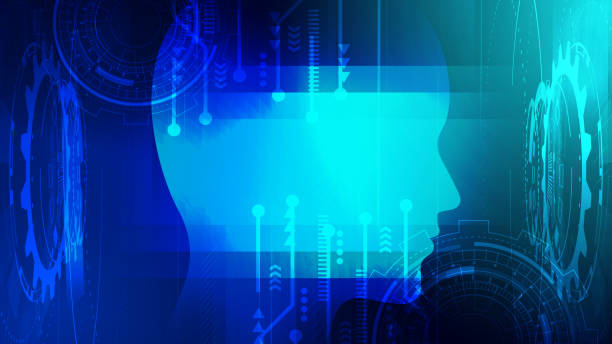What is an Artificial Intelligence Robot and How Does it Work?

#AI robot (Artificial Intelligence Robot) is a combination of two key technology fields: artificial intelligence and robotics.
These robots, using complex algorithms and machine learning models, are capable of performing tasks that require human intelligence.
Simply put, an AI robot is a machine that can think, learn, and make decisions based on data.
The way these robots work is that they first collect data through sensors or other sources.
Then, this data is processed using artificial intelligence algorithms and converted into meaningful information.
Finally, the robot performs actions using this information.
These actions can include movement, object manipulation, answering questions, or performing complex calculations.
One of the most important features of AI robots is their learning capability.
These robots can improve their performance using past experiences.
For example, a smart vacuum cleaner robot can find a more optimal path for cleaning by identifying people’s movement patterns in the house.
AI robots have a wide range of applications, including: industrial production lines, medicine and healthcare, customer services, education, and entertainment.
The use of AI robots is significantly increasing, and they are expected to play a more prominent role in our lives in the near future.
Does your current website display your brand’s credibility as it should? Or does it drive away potential customers?
RasaWeb, with years of experience in designing professional corporate websites, is your comprehensive solution.
✅ A modern, beautiful website tailored to your brand identity
✅ Significant increase in lead generation and new customers
⚡ Contact RasaWeb now for a free consultation on corporate website design!
Types of AI Robots Based on Application

AI robots are divided into different types based on their application, each designed to perform specific tasks.
Some of the most important types of these robots include:
1.
Industrial Robots
These robots are used in factory production lines for repetitive and heavy tasks.
They can assemble parts, weld, paint, and package with high precision and speed.
The use of industrial robots increases productivity, reduces costs, and improves product quality.
2.
Service Robots
These robots are designed to provide services to humans.
They can assist nurses in hospitals, welcome guests in hotels, take orders and serve food in restaurants.
Service robots can also be used at home for daily tasks such as cleaning, gardening, and caring for the elderly and children.
3.
Medical Robots
These robots are used in operating rooms for precise and complex surgeries.
They can create smaller incisions and reduce bleeding using delicate surgical instruments.
Medical robots can also be used in patient rehabilitation, disease diagnosis, and medication prescription.
4.
Search and Rescue Robots
These robots are designed to assist rescuers in natural disasters such as earthquakes and floods.
They can search dangerous areas, find victims, and collect information about environmental conditions.
5.
Educational and Entertainment Robots
These robots are used for educating children and adults in various fields.
They can explain complex concepts in simple language, play educational games, and tell engaging stories.
Entertainment robots can also be used as companions for lonely individuals.
These classifications are only a part of the types of AI robots, and with technological advancements, new robots with more diverse applications will be introduced to the market.
Advantages and Disadvantages of Using AI Robots
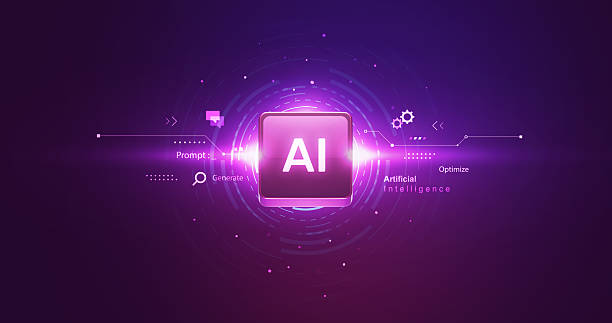
The use of AI robots has numerous advantages and disadvantages, which we will examine in this section:
Advantages
1.
Increased Productivity
AI robots can perform tasks faster and more accurately than humans.
They can also work around the clock without needing rest.
This leads to increased productivity and reduced costs.
2.
Reduced Errors
AI robots are less prone to errors than humans.
They can perform tasks with high precision and repeatability.
This leads to improved quality of products and services.
3.
Performing Dangerous Tasks
AI robots can work in dangerous and toxic environments instead of humans.
This leads to saving human lives and reducing work-related injuries.
4.
Providing Better Services
AI robots can provide better services to customers.
They can answer customer questions, solve their problems, and provide them with the necessary information.
Disadvantages
1.
High Cost
Purchasing and maintaining AI robots can be expensive.
Also, using these robots requires specific training and expertise.
2.
Unemployment
The use of AI robots can lead to job losses for some individuals.
This can create social and economic problems.
3.
Ethical Issues
The use of AI robots can raise numerous ethical issues.
For example, if an AI robot makes a mistake, who will be responsible?
4.
Dependency
Excessive reliance on AI robots can lead to a decrease in human skills and loss of control over matters.
| Advantages | Disadvantages |
|---|---|
| Increased Productivity | High Cost |
| Reduced Errors | Unemployment |
| Performing Dangerous Tasks | Ethical Issues |
| Providing Better Services | Dependency |
In general, the use of AI robots can have many advantages, but their disadvantages must also be considered, and plans should be made to mitigate their negative effects.
The Future of AI Robots: Predictions and Probabilities
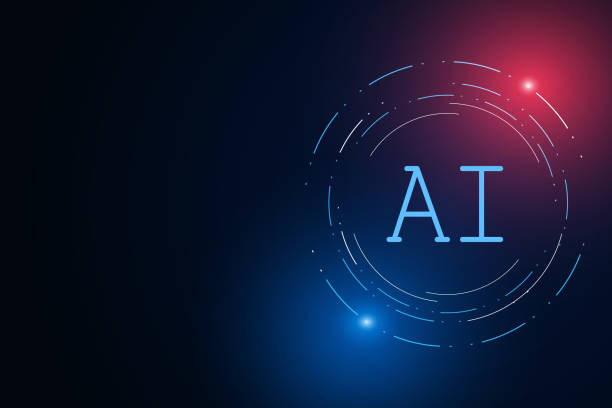
The future of AI robots is very bright and full of potential.
With the continuous advancement of technology, these robots are expected to play a more prominent role in various aspects of our lives.
Some of the most important predictions and probabilities regarding the future of AI robots include:
1.
Increased Intelligence
Future robots will be much smarter than current robots.
They will be able to solve more complex problems, make better decisions, and interact more naturally with humans.
This increase in intelligence will be possible thanks to advancements in machine learning, natural language processing, and computer vision.
2.
Expansion of Applications
AI robots will be used in a much wider variety of fields.
They can help us in homes, schools, hospitals, factories, farms, and even space.
New applications such as autonomous surgical robots, private tutor robots, and astronaut robots will be developed.
3.
Human-Robot Collaboration
Instead of replacing humans, future robots will increasingly collaborate with humans.
They can perform tedious and dangerous tasks, enabling humans to focus on more creative and strategic tasks.
This collaboration can lead to increased productivity and innovation.
4.
Ethical and Legal Issues
With the widespread use of AI robots, new ethical and legal issues will arise.
For example, who will be responsible for the actions of robots? How should the rights and privacy of robots be protected? These issues require careful discussion and consideration by experts and policymakers.
5.
Social and Economic Impacts
AI robots can have profound impacts on society and the economy.
They can lead to increased wealth and welfare, but they can also cause job losses for some individuals and increased inequality.
To mitigate the negative effects of these changes, proper planning and policymaking are needed.
Overall, the future of AI robots is very promising, but their challenges and ethical issues must also be considered, and preparations made to address them.
An AI robot is a powerful tool that can improve our lives, but its use must be done carefully and responsibly.
Does your current corporate website not reflect your brand’s credibility and strength as it should? RasaWeb solves this challenge for you with professional corporate website design.
✅ Increased credibility and visitor trust
✅ Targeted attraction of more customers
⚡ Click for a free consultation!
How to Build an AI Robot?
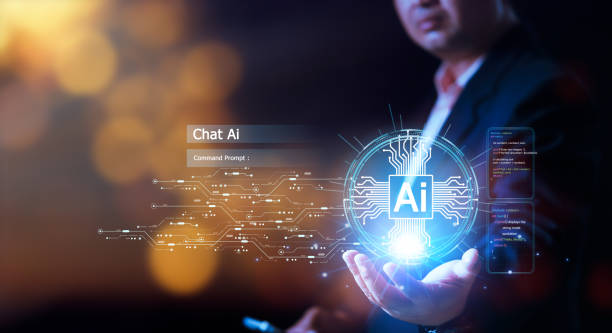
Building an AI robot is a complex and multifaceted process that requires knowledge and skills in various fields, including robotics, artificial intelligence, and programming.
However, with available tools and resources, a simple AI robot can also be built.
In this section, we outline the general steps for building an AI robot:
1.
Define the Goal
First, you need to specify your goal for building the robot.
What is your robot supposed to do? What problems should it solve? Answering these questions will help you design and implement your robot correctly.
2.
Hardware Design
The robot’s hardware includes electronic, mechanical parts, and sensors.
You need to choose the appropriate parts according to your robot’s goal.
For example, if your robot needs to move, you should select a motor, wheels, and a motion control system.
If your robot needs to collect information from the environment, you should choose appropriate sensors such as cameras, microphones, and temperature and humidity sensors.
3.
Software Development
The robot’s software includes AI algorithms, control programs, and a user interface.
You need to develop the appropriate software based on your robot’s goal.
For example, if your robot needs to detect objects, you should use computer vision algorithms.
If your robot needs to speak, you should use natural language processing algorithms.
4.
Hardware and Software Integration
After designing the hardware and developing the software, you need to integrate them.
This involves connecting electronic components, installing software, and testing the robot’s performance.
5.
Training and Optimization
After building the robot, you need to train it to perform its tasks correctly.
Robot training includes providing training data, adjusting algorithm parameters, and evaluating the robot’s performance.
You should also continuously optimize the robot to improve its performance.
To build an AI robot, you can use various tools and platforms such as Arduino, Raspberry Pi, ROS, and TensorFlow.
You can also use ready-made AI libraries and APIs like Google Cloud AI and Microsoft Azure Cognitive Services.
Building an AI robot is an exciting challenge that can help you increase your knowledge and skills in various fields.
An AI robot is a powerful tool that can improve our lives.
The Role of AI Robots in Various Industries
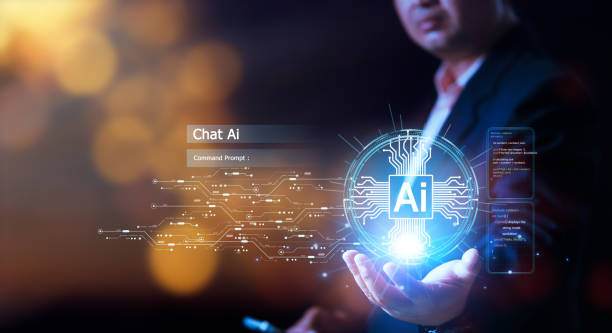
AI robots play a very important role in various industries and help improve productivity, reduce costs, and increase the quality of products and services.
In this section, we examine the role of AI robots in some key industries:
1.
Manufacturing Industry
AI robots are used in the manufacturing industry for repetitive, heavy, and dangerous tasks.
They can assemble parts, weld, paint, and package with high precision and speed.
The use of AI robots increases productivity, reduces costs, and improves product quality.
Additionally, AI robots can help reduce waste and energy consumption.
2.
Medical Industry
AI robots are used in the medical industry for precise and complex surgeries, disease diagnosis, patient rehabilitation, and care for the elderly and children.
They can create smaller incisions and reduce bleeding using delicate surgical instruments.
Additionally, AI robots can assist doctors in diagnosing diseases using medical images and help patients in rehabilitation with customized exercise programs.
AI robots help improve the quality of healthcare and increase human life expectancy.
3.
Agricultural Industry
AI robots are used in the agricultural industry for planting, cultivating, and harvesting crops.
They can use sensors and AI algorithms to measure environmental conditions and automatically perform irrigation, fertilization, and pest control.
The use of AI robots increases productivity, reduces costs, and improves the quality of agricultural products.
Additionally, AI robots can help reduce water and fertilizer consumption.
4.
Service Industry
AI robots are used in the service industry to provide customer services, answer questions, solve problems, and provide information.
They can assist customers in banks, stores, hotels, and restaurants.
The use of AI robots improves service quality, reduces waiting times, and increases customer satisfaction.
Overall, AI robots play a very important role in various industries and help improve productivity, reduce costs, and increase the quality of products and services.
With the continuous advancement of technology, the role of AI robots in various industries is expected to become more prominent.
Challenges in the Development of AI Robots
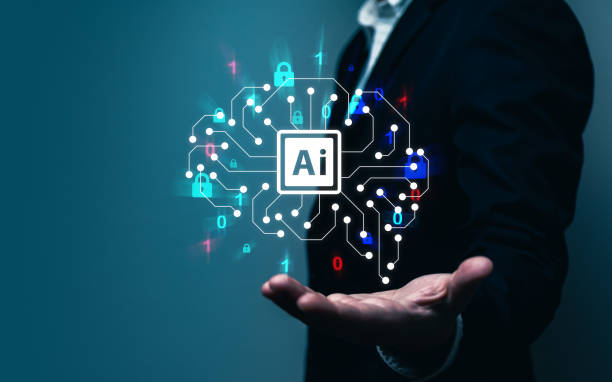
The development of AI robots faces numerous challenges, some of which are technical, some ethical, and some legal.
In this section, we examine some of the most important challenges in the development of AI robots:
1.
Technical Limitations
There are still many technical limitations in the field of artificial intelligence.
For example, robots still cannot reason like humans, possess creativity, or understand emotions.
Also, robots still cannot operate effectively in complex and unpredictable environments.
Overcoming these limitations requires further research and development in various areas of artificial intelligence.
An AI robot faces challenges in solving complex problems.
| Challenges | Description |
|---|---|
| Technical Limitations | Inability to reason, create, and understand emotions |
| Ethical Issues | Responsibility, discrimination, and privacy |
| Legal Issues | Laws and regulations related to the use of robots |
| Social and Economic Impacts | Unemployment and inequality |
2.
Ethical Issues
The development of AI robots raises numerous ethical issues.
For example, if an AI robot makes a mistake, who will be responsible? How can discrimination by robots be prevented? How can individuals’ privacy be protected from robots? Solving these issues requires careful discussion and consideration by experts and policymakers.
3.
Legal Issues
Laws and regulations regarding the use of robots do not yet exist in many countries.
This creates ambiguity and uncertainty regarding the responsibilities and rights of individuals concerning robots.
Developing appropriate laws and regulations for the use of robots is essential.
4.
Social and Economic Impacts
The development of AI robots can have profound impacts on society and the economy.
For example, robots can lead to job losses for some individuals and increased inequality.
To mitigate the negative effects of these changes, proper planning and policymaking are needed.
For this purpose, all capabilities of #AI must be utilized.
Overcoming these challenges requires the joint effort of researchers, policymakers, and AI robot activists.
AI Robot Security and Ways to Counter Threats

The security of AI robots is a very important issue that must be considered throughout their design, development, and deployment processes.
AI robots can be exposed to various security threats that can lead to harm to individuals, property damage, and information theft.
In this section, we examine some of the most important security threats to AI robots and ways to counter them:
1.
Hacking
AI robots can be hacked by hackers.
Hackers can take control of robots by hacking them and use them for malicious purposes.
For example, hackers can use industrial robots to disrupt production lines or use domestic robots to spy on individuals.
To counter this threat, robots must be protected using encryption, authentication, and other security measures.
2.
Cyber Attacks
AI robots can be targeted by cyber attacks.
Cyber attacks can lead to disruption of robot operations, information theft, and damage to related systems.
For example, Distributed Denial of Service (DDoS) attacks can disable robots, and phishing attacks can lead to user information theft.
To counter this threat, robots must be protected using firewalls, intrusion detection systems, and other security measures.
3.
Data Manipulation
The data that AI robots use for learning and decision-making can be manipulated.
Data manipulation can lead to robots making wrong decisions and performing improperly.
For example, manipulating the training data of a face recognition robot can cause the robot to not correctly identify faces.
To counter this threat, the quality and accuracy of the data used by robots must be ensured, and error detection and correction methods must be used.
4.
Physical Attacks
AI robots can be subjected to physical attacks.
Physical attacks can lead to damage to robots, theft of components, and unauthorized access to information.
For example, saboteurs can destroy industrial robots or steal domestic robots.
To counter this threat, robots must be protected using CCTV cameras, alarm systems, and other physical security measures.
AI robot security is a complex issue that requires a multilayered approach.
To counter security threats, a combination of technical, organizational, and physical measures must be used.
Do you know that poor online store design can drive away up to 70% of your potential customers? RasaWeb transforms your sales with professional and user-friendly e-commerce website design.
✅ Significant increase in sales and revenue
✅ Full optimization for search engines and mobile
⚡ [Get a free consultation from RasaWeb]
Ethical Considerations in the Design and Use of AI Robots
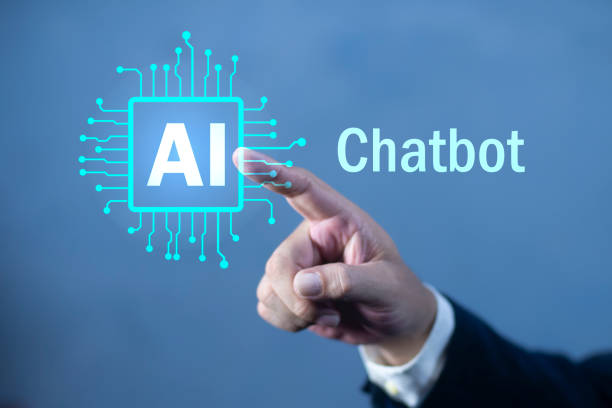
The design and use of AI robots require attention to numerous ethical considerations.
These considerations include accountability, transparency, fairness, privacy, and security.
In this section, we examine some of the most important ethical considerations in the design and use of AI robots:
1.
Accountability
If an AI robot makes a mistake or causes harm, who will be responsible? Is the robot’s manufacturer, the robot’s user, or the robot itself responsible? These questions require precise and clear answers.
To determine accountability, various factors such as intent, awareness, and control must be considered.
Also, mechanisms for compensation and accountability to victims must be established.
2.
Transparency
How do AI robots make decisions? The algorithms and data used by robots must be transparent and understandable.
This helps people to have more trust in robots and to identify the cause if a problem arises.
Transparency can also help prevent the misuse of robots.
3.
Fairness
AI robots should not be discriminatory.
They must treat all individuals equally and not make decisions based on gender, race, religion, or other personal characteristics.
To prevent discrimination, diverse and representative data should be used to train robots, and algorithms should be regularly evaluated.
4.
Privacy
AI robots often collect and process individuals’ personal information.
This information must be kept securely and confidentially and used only for authorized purposes.
Individuals should have the right to access, correct, and request the deletion of their personal information.
5.
Security
AI robots must be protected against cyber attacks and manipulation.
Hackers can take control of robots by hacking them and use them for malicious purposes.
To prevent this, robots must be protected using encryption, authentication, and other security measures.
An AI robot must be secure against cyber threats.
Adherence to ethical considerations in the design and use of AI robots is essential.
This helps us to responsibly and sustainably benefit from this technology and prevent harm to individuals and society.
An AI robot must be designed and used ethically.
Important Tips for Choosing and Buying an AI Robot

Choosing and buying a suitable AI robot can be a complex process.
Given the wide variety of robots available on the market, important points must be considered to select the best option.
In this section, we examine some of the most important tips for choosing and buying an AI robot:
1.
Define Needs
Before purchasing, you must accurately define your needs.
What do you want the robot for? What tasks should it perform? What features are important to you? Answering these questions will help you narrow down your options and choose a robot that best meets your needs.
2.
Research and Review
After defining your needs, you should research and review.
Gather information about different robots, compare their technical specifications, and read user reviews.
This will help you become familiar with the strengths and weaknesses of each robot and make a better decision.
3.
Pay Attention to Technical Specifications
When choosing a robot, you should pay attention to its technical specifications.
These specifications include processing power, memory, sensors, motors, battery, and other important features.
The technical specifications must match your needs.
For example, if you want the robot for heavy tasks, you should choose a robot with high processing power and sufficient memory.
4.
Software Review
The robot’s software is as important as its hardware.
The software must be user-friendly, stable, and reliable.
It should also have the features and capabilities you need.
Before purchasing, test the robot’s software and ensure its proper functioning.
5.
Price
Robot prices can vary greatly.
Before purchasing, determine your budget and choose a robot that falls within your budget.
Remember that a higher price does not always mean better quality.
Choose an AI robot carefully.
6.
After-Sales Service
After-sales service is of high importance.
Before purchasing, ensure that the seller provides adequate after-sales service.
These services can include warranty, repairs, and technical support.
7.
Test Before Purchase
If possible, test the robot before purchasing.
This will help you ensure the robot’s proper functioning and identify potential problems. Test the AI robot before buying.
By following these important tips, you can choose a suitable AI robot and benefit from its advantages.
Frequently Asked Questions
| Question | Answer |
|---|---|
| What is an AI robot? | It is a robot that uses artificial intelligence capabilities to understand the environment, reason, learn, and make decisions to perform complex tasks independently. |
| What is the main difference between a regular robot and an AI robot? | AI robots can learn and adapt to their environment, while regular robots usually operate based on fixed, predetermined programming. |
| In what areas are AI robots used? | In fields such as industry (production lines), medicine (robotic surgeries), services (customer support, smart vacuum cleaners), exploration (space and underwater), and entertainment. |
| How do AI robots learn? | They acquire new skills by analyzing large data sets and identifying patterns through Machine Learning and Deep Learning algorithms. |
| Can AI robots have emotions? | Currently, no. They can identify or simulate emotions, but they do not experience emotions in the same way humans do. |
| What are the most important advantages of using AI robots? | Increased productivity, reduced human error, performing dangerous or repetitive tasks, and providing innovative and efficient services. |
| What challenges exist in the development of AI robots? | The need for abundant and high-quality data, complexity of algorithms, ethical issues, cybersecurity, and high research and development costs. |
| Are AI robots dangerous to humans? | With adherence to safe design principles and ethical regulations, no. Concerns are mostly related to social and economic impacts, such as changes in the labor market. |
| What is an example of an AI robot in daily life? | Smart vacuum cleaner robots (like Roomba) that autonomously map and clean homes, or smart voice assistants (like Siri and Alexa). |
| How is the future of AI robots predicted? | They are expected to become smarter, more autonomous, and capable of more complex interactions with humans, playing a more prominent role in industry, medicine, transportation, and daily life. |
And other services by RasaWeb Advertising Agency in the field of advertising
Smart Website Development: A novel service for enhanced campaign management through user experience customization.
Smart Customer Journey Mapping: Professional optimization to increase click-through rates using Google Ads management.
Smart Custom Software: A professional solution for customer acquisition focusing on SEO-driven content strategy.
Smart Digital Branding: An effective tool for digital branding with the help of dedicated programming.
Smart Sales Automation: Professional optimization to increase sales through attractive user interface design.
And over hundreds of other services in internet advertising, advertising consultation, and organizational solutions
Internet Advertising | Advertising Strategy | Advertorials
Sources
Comprehensive Guide to AI Robots
Application of Artificial Intelligence in Data Analysis
? Are you ready to take your business to the peak in the digital world? RasaWeb Afarin, a leading digital marketing agency, specializing in Search Engine Optimization (SEO), content marketing, and responsive website design, offers innovative and comprehensive solutions for your growth and visibility. We help you achieve your business goals and surpass your competitors with a strong and impactful online presence.
📍 Tehran, Mirdamad Street, next to Bank Markazi, Southern Kazeroun Alley, Ramin Alley, No. 6

